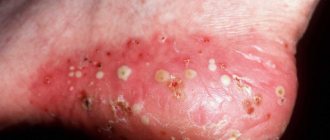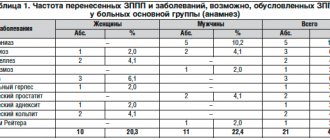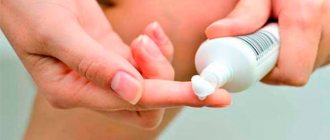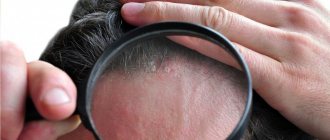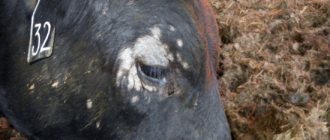Issues discussed in the material:
- What are the first signs of bedsores in bedridden patients?
- What are the causes of bedsores in bedridden patients?
- What are the dangers of bedsores in bedridden patients?
- What are the methods for preventing bedsores in bedridden patients?
When people are treated in geriatric wards, intensive care units or recovering at home after heart attacks, strokes, spinal injuries, complex fractures of the limbs, and are also in a state of precoma, spinal paralysis and other pathologies associated with prolonged stay in an immobilized position, their illnesses are often complicated the appearance of bedsores. This article will tell you why bedsores are dangerous in bedridden patients.
Reasons for education
Poor circulation, continuous compression of soft tissues and blood vessels leads to the occurrence of stagnation in them and their gradual death (necrosis). This complication occurs especially often (7 out of 10 cases) in older patients. This is caused by the fact that in older people the functioning of the circulatory system deteriorates and the process of tissue self-healing slows down.
Timely implementation of preventive measures and competent treatment can prevent the formation of bedsores. If the medical personnel caring for the patient or family members did not pay attention to the first signs of an approaching problem, then spots on the skin can quickly turn into deep festering wounds, and fistulas can form in their place. The development of severe complications can even lead to the death of the patient.
Bedsores are very difficult to treat, the wounds are cleared slowly, they may re-suppurate, and the formation of new necrotic areas. The fact that the patient is still in a supine position also complicates healing.
But tissue necrosis can occur not only in patients who have been on bed rest for a long time. Any prolonged external compression of tissues, even if the body is in normal condition, can lead to the formation of bedsores. Such a complication can be caused, for example, by an incorrectly applied plaster cast, the patient’s constant presence in a wheelchair, impaired tissue nutrition as a result of severe damage to the spinal cord, and so on.
Most often, bedsores form in areas where there are bony protrusions. There is usually no fat layer there, so there is two-way pressure on the skin: from the outside and the inside. Depending on the position of the body, these may be the surfaces of areas such as
- hips, knees, ankles if the patient is lying on his side;
- cheekbones, iliacus and chest bones, pubis, when the patient is forced to lie on his stomach;
- ischial tuberosity, shoulder blades, elbows, sacrum, back of the head, heels when lying on the back;
- shoulder blades, buttocks, ischial tuberosity, foot bones in people who spend a significant part of the time in a wheelchair.
Among the reasons contributing to the formation of bedsores, several main factors can be identified.
- Overdrying of the skin
- Excessive moisture
- Compression of blood vessels and nerve fibers
- No microvibration
- Decreased muscle mass
- Every 1.5 or 2 hours the patient needs to be turned over and changed position so that external influence (pressure) is applied to other parts of the body. If areas with persistent redness of the skin or maceration develop, you should refrain from placing the patient on this area.
- Try to minimize the force of pressure on the surface of the patient’s body from the outside. Currently, online stores and pharmacies offer a wide selection of devices that provide pressure continuity and reduce its value. These include beds with a built-in special mechanism, anti-bedsore mattresses and pillows filled with water, helium, and air.
- The patient’s diet is also of great importance. First of all, it is necessary to provide the body with “building material” for the formation of new cells. Therefore, products offered to bedridden patients should contain sufficient quantities of not only vitamins and microelements, but mainly protein. An insufficient amount of it can lead to disruption of the immune and regenerative functions of the body.
- Strict adherence to all necessary hygiene procedures, especially after urination, defecation, use of medical diapers, absorbent diapers for bedridden patients, and so on. Several times a day, not only in the morning and evening, wipe the entire body with special products or even just wet wipes to prevent sweat from appearing on the skin.
- Antibacterial soap cannot be used to care for bedridden patients, as it “kills” not only harmful but also beneficial microorganisms for the skin. Alcohol-containing mixtures can cause drying of the skin, so they can only be used for oily skin.
- During manipulations, you should not rub the skin too much; it is best to use soft cotton washcloths, and after performing hygiene procedures, do not wipe the body, but gently blot it or let it dry on its own.
- Massage is also a must. To carry it out, you can use a soft terry mitten, which you can buy or make yourself. The red spots that appear cannot be massaged; you only need to treat the intact skin around it.
As a result, the superficial stratum corneum peels off faster, protecting the skin from external influences.
This problem can occur as a result of excessive sweating, urinary and fecal incontinence. An aggressive environment causes skin irritation, it swells, and friction increases. In addition, high humidity promotes the development of infection.
Blood vessels cannot fully perform their functions: provide tissue cells with nutrients and oxygen. Hypoxia (oxygen deficiency), lack of nutrition, deterioration of metabolism in tissues, as a result of the inability of nerve fibers to perform their functions, lead to a decrease in cell viability and their death.
Compression of the lymphatic vessels negatively affects the functioning of the excretory system. Used and dead cells, along with toxins, processed substances, and waste products, accumulate in the intercellular space and tissues. This, in turn, leads to a decrease in immunity. Microbes and viruses freely penetrate the body, inflammatory processes develop, purulent complications, even blood poisoning.
Even when the body is at rest, muscle cells continue to produce energy due to microvibrations of muscle cells. It promotes more efficient flow of biochemical, metabolic, and physiological processes in the body. The level of microvibrations is maintained at a sufficient height due to physical activity and sports. That is why a sedentary lifestyle leads to a deficiency of this energy, and, as a result, to inhibition of the basic functions of the body.
A decrease or complete absence of muscle load, a sedentary (or completely immobile) lifestyle are the causes of atrophy - a decrease in muscle mass, which in turn leads to a reduction in microvibrations.
Taking into account all of the above factors, the formation of bedsores in bedridden patients and disabled people leading a sedentary lifestyle is a very important problem. The formation of such defects occurs very quickly, and, despite the fact that this complication has been known for a long time, there is not yet a sufficiently effective method of treating and preventing the disease that can quickly restore all functions of the body. The search for new modern therapeutic agents continues, the task still remains relevant.
Levomekol
One of the most popular ointments for bedsores. Levomekol is inexpensive and has a complex effect. The ointment relieves inflammation, removes pus, and cleans the wound. The antibacterial effect of the drug helps get rid of the infection that often develops in wounds with bedsores. Reviews of Levomekol are mostly positive, especially since the product has a very reasonable price. "Levomekol" helps at the prevention stage and with any stages of bedsores (wounds need to be treated two to three times a day). Among the disadvantages are an inconvenient tube and a too liquid texture when heated.
Levomekol
OJSC "Nizhpharm", Russia
An ointment that has an antimicrobial, anti-inflammatory, drying effect and is used for: Purulent wounds (including those infected with mixed microflora) in the first (purulent-necrotic) phase of the wound process.
from 38
1147
- Like
- Write a review
Types of bedsores
It may seem strange to most people who have not encountered this problem, but in a sick person, whose body is weakened by the fight against a serious illness, bedsores can appear after just two hours of lying or sitting in one position. The process from minor redness to the appearance of the first signs of necrosis, and then serious wounds, can occur very quickly.
In accordance with the symptoms accompanying formations at various stages of their development and transformation, 4 stages of the disease are distinguished.
- Areas of greatest pressure, which are the most likely areas of damage, are characterized by slight redness, a slight local increase in temperature, and soreness to the touch. At this stage, there is still no structural damage to the skin. If you start treatment at this stage, it will not be difficult to get rid of the first symptoms.
- If treatment is not started, the formation of bedsores will continue. The formation of blisters, loss of integrity and detachment of the skin will begin, the temperature will rise, and tissue swelling will increase. The lesion may reach the layers of subcutaneous tissue.
- This stage is characterized by more serious lesions, up to the first signs of necrosis (death) of areas of the epidermis; muscle and fatty tissue can be observed through areas with dead cells; the wounds are filled with pus.
- The destruction process involves not only skin tissue, but also muscle, bone, fat, and tendons. The wounds are completely filled with purulent contents, the area of necrosis expands, necrotic processes affect all layers. In this situation, therapeutic treatment will no longer bring relief to the patient; surgical intervention is mandatory.
Oflomelid
This ointment for bedsores contains anti-inflammatory, disinfectant and analgesic substances - all this together helps to quickly cope with the problem. Oflomelid usually needs to be applied once a day to reduce the risk of infection of the wound and clean it. Significant relief occurs already in the first days of using the drug, and bedsores can heal completely after two weeks of constant use. Reviews about Oflomelid ointment are only positive, despite its cost (although the tube of the product is large). The only disadvantage of Oflomelid is that the ointment is not available in all pharmacies.
Oflomelid
Novopharm-Biosintez LLC, Ukraine
Infected purulent wounds of various localization and etiology in the first (purulent-necrotic) phase of the wound process, incl.
accompanied by severe pain: - infected burns of II-IV degree; - bedsores; - trophic ulcers; — postoperative and post-traumatic wounds and fistulas; - wounds after opening abscesses, phlegmons, after surgical treatment of abscessed boils, carbuncles, hidradenitis, suppurating atheromas, lipomas. from 93
5.0 2 reviews
298
- Like
- Write a review
Disease prevention
As sad as it may be, it is almost impossible to avoid the formation of bedsores in bedridden patients. However, it is quite possible to delay their formation, make the course of the disease easier, and not cause so much inconvenience and pain to a person. To do this, first of all, it is necessary to implement appropriate preventive measures in a timely manner.
It is necessary to take measures to prevent the formation of wounds and ulcers from the first day of the disease. Once the necrotic process has started, it is quite difficult to stop it. When moving to each subsequent stage, the patient will experience more and more suffering and discomfort, and the likelihood of a complete cure will decrease.
Preventive measures taken to prevent the formation of bedsores should be aimed at activating blood circulation, restoring microvibration of tissue cells, and eliminating other factors that provoke the appearance of wounds and ulcers. We must try to return the patient to an active lifestyle as soon as possible. To do this, you can use special medical beds and accessories that allow the patient to at least turn from side to side independently, perform any other movements, actions, even if the function of movement and walking has not yet been restored.
Prevention of bedsores includes the following manipulations.
Modern medical accessories, which should be selected depending on the stage of the disease and the complexity of its course, make caring for bedridden patients as simple as possible, allowing not only to avoid the occurrence of bedsores, but also to provide the patient with comfortable living conditions.
Betadine
Betadine is an effective iodine-based antiseptic. The product can be purchased in the form of an ointment and in the form of a solution. Thanks to its strong bactericidal effect, the drug heals bedsores in the shortest possible time, destroying bacteria and fungi in the wounds. "Betadine" is prescribed both for obvious infection of wounds and for prevention. The ointment helps cleanse the wound of necrotic tissue and pus; it quickly heals and heals. During treatment of bedsores, the patient does not feel a burning sensation. It is worth considering that Betadine can cause allergic reactions.
Betadine
Egis, Hungary
Betadine is an antiseptic and disinfectant.
It has a bactericidal effect on gram-positive and gram-negative bacteria (with the exception of Mycobacterium tuberculosis). Active against bacteria, fungi, viruses, protozoa. Suppositories are made on a water-soluble basis and do not have an irritating effect. from 196
5.0 1 review
1512
- Like
- Write a review
Treatment of bedsores
If a bedridden patient is in an outpatient clinic, then he is cared for by qualified specialists who have the necessary knowledge, practical skills, and appropriate medical equipment. At home, the entire burden falls on the shoulders of family members. At the same time, it is not always possible to perform some manipulations, such as high-quality cleaning of the wound from suppuration, effective gas exchange that ensures drying of the skin surface, and tissue repair. Therefore, if a patient develops bedsores, it is necessary to consult with the attending physician, who will prescribe the appropriate treatment and prescribe procedures.
There are two methods for treating necrotic formations on the skin: conservative and surgical. In the first stages of the development of the disease, it is assumed that the doctor’s instructions are followed, including:
- local treatment with medications, careful hygienic cleaning of the damaged area and adjacent skin with hydrogen peroxide, saline, and so on;
- physical activity with the use of aids for the rehabilitation of disabled and bedridden patients within the limits accessible to the patient;
- the use of antifungal ointments, antibacterial drugs to treat affected areas;
- high-calorie protein diet, with the addition of vitamins (A, C) and microelements (iron, zinc sulfate).
At later stages, when the changes have reached the deep layers of tissue, surgical intervention is required, which involves: drainage of wounds, opening of purulent formations, antiseptic treatment, excision of ulcers, skin transplantation, application of musculocutaneous flaps, and so on. Typically, the hospitalization period is about one and a half months. With timely and correct treatment and careful medical care, in almost 80% of cases the patient’s condition improves significantly, and in 40%, bedsores are completely cured.
Only a doctor can determine the need for surgical intervention during the course of the disease. An untimely or incorrectly performed operation can lead to a deterioration in the patient’s general condition and an increase in the area of the lesion. At the same time, both the patient and his family members should be prepared for the fact that treatment may not lead to an improvement in the condition. As a result of insufficient blood circulation, the transplanted skin may not take root. Fluid may accumulate under the skin. Possible suture dehiscence, bleeding, secondary ulcer formation, skin necrosis and relapse of the disease.
Complications from bedsores
Incorrect diagnosis, incorrectly determined stage of development of the lesion, ineffective treatment, and insufficient care on the part of service personnel can lead to the development of quite serious complications against the background of bedsores, including the death of the patient. The most serious consequences include the development of the following diseases.
- Erysipelas
- Phlegmon
- Sepsis
- Gangrene
Or erysipelas is typical for older patients with stage II bedsores. This is an infectious disease caused by streptococcus, which penetrates the wound through damaged skin. Treatment involves the use of sulfonamides, penicillin antibiotics, and nitrofurans.
It is an acute inflammatory process of the cellular space as a result of penetration of E. coli and staphylococcus through the wound surface. Among the main symptoms of infection: high temperature, redness, pain, swelling, purulent contents. Broad-spectrum antibiotics are prescribed. The source of the lesion must be opened.
It is also an inflammatory process that can occur at stages III-IV of bedsores. This disease affects the entire body, therefore, if treatment is not started in a timely manner, it often leads to death. Anti-inflammatory treatment is carried out using glucocorticoids. Detoxification of the body is mandatory.
At stage IV of development, bedsores can lead to the development of gangrene. The complication is accompanied by darkening of the epidermis, rapid tissue necrosis, and a putrid odor. Upon palpation, a specific crunch is diagnosed. Intramuscular injections are prescribed to protect the tissue adjacent to the wound from infection. Treatment is surgical and involves amputation if the limb is affected.
To prevent the development of these complications, it is enough to provide the patient with proper systematic care, regular hygiene procedures, and strictly follow the instructions of the attending physician.
Sulfargin
“Sulfargin” improves the condition of stage 2 and 3 bedsores literally the next day of use. This ointment for the prevention and treatment of wounds contains silver. The active ingredients of the drug destroy bacteria in the wound, relieve pain, swelling, cleanse and heal. Before applying Sulfargin, it is necessary to clean the wound of pus. The product can be used both under a bandage and without. If under a bandage, then treat once a day. And although this ointment for bedsores is expensive, all patients speak very highly of it.
Sulfargin
Tallinn HFZ, Estonia
In adults and children over 1 year of age for the prevention and treatment of purulent wounds and burns with mild exudation, as well as trophic ulcers, bedsores: - when treating fresh burn surfaces to prevent the development of infection;
- for the treatment of wound and burn surfaces in the first stage of the wound process with mild exudation; - for the treatment of wounds and burns of I-IIIA degrees in the second and third stages of the wound process; - for the treatment of trophic ulcers, bedsores, long-term non-healing wounds (including wounds of the stump). from 180
422
- Like
- Write a review
Classical medicine
Therapeutic and surgical treatment takes a lot of time and effort from the patient and the people serving him. For a quick and, most importantly, effective cure, it is necessary to constantly monitor the patient’s condition, evaluate the appearance of the skin, carefully remove keratinized, diseased tissue, carry out air baths and measures to maintain blood circulation at a normal level, observe preventive measures, use special mattresses for bedridden patients from bedsores, sheets, pillows and so on. The use of medications prescribed by a doctor is also mandatory.
Diaper rash cream
These are not therapeutic, but prophylactic agents. If bedsores have already formed, then there is no point in using them. They are used after hygiene procedures for bedridden patients. They are applied to areas and zones that are often and for a long time exposed to high humidity or are subject to compression. They help increase tissue turgor, dry the skin, and reduce areas of maceration.
Ointment
This dosage form is used to fight infections, as a stimulant to accelerate regeneration processes, and so on. They are used at stages III-IV of the disease to treat deep wounds and ulcers. The most commonly used medications of this type include the following.
- Vishnevsky ointment
- Levomikol
- Solcoseryl
- Oak bark
- Field chamomile
- Sea buckthorn oil
- Onion
- Potato
- Baking soda
It was developed in the middle of the last century by a group of Soviet surgeons. Can be used to eliminate foci of inflammatory processes caused by various microbes. To treat bedsores, it is applied to the affected areas twice a day and fixed with a medical gauze bandage.
A more modern product with an antimicrobial, dehydrating effect based on chloramphenicol. During the day, a single application is sufficient, after which the affected area is covered with a cloth or gauze.
A medicinal product that improves regeneration processes and blood microcirculation, which is due to the presence of calf blood extracts, vitamins, microelements, and nutrients. Used 2 times a day.
If there is positive dynamics, the prescribed ointment is used until complete recovery is achieved. Otherwise, it should be replaced with another, more effective drug or used in combination with another ointment.
Medicines
In addition to acting directly on the affected areas themselves, the doctor must also prescribe systemic drugs: antibiotics, antithrombosis, anti-inflammatory, to improve microcirculation, to relieve pain. The duration of the course and the dose of the drug taken are determined by the doctor depending on the patient’s condition. The course of treatment with antibiotics is usually from one to one and a half weeks, anti-inflammatory - up to 2 months.
Medicines are taken before the healing process begins, while the ointment is applied until the final epithelization of the affected surface.
Bandages
For bedsores on the tailbone, special anti-bedsore hydrocolloid bandages of the Hydrocoll series are used, which can be placed on the affected area. Their use helps cleanse the wound, counteract the occurrence of secondary infection, and accelerate tissue restoration.
The area of the sacrum and buttocks is extremely difficult to bandage, so a special Hydrocoll sacral model has been developed to care for bedsores on the sacrum. A butterfly-shaped bandage with a self-locking adhesive edge creates a moist environment, promotes cleansing and accelerates the healing process.
A deep healing dressing, which prevents wound infection, can remain in the area where the bedsore is located for up to 5 days.
